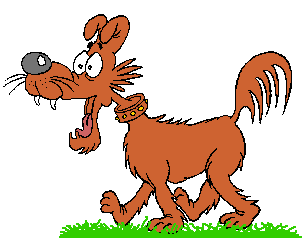
Bergamini
Brainy Lessons
Growl Like A Dog With R
Emergent Literacy Design
Rationale: This lesson will help children recognize /r/, the phoneme represented by R. Students will learn to identify /r/ in everyday language by a meaningful representations (dog growling “ruff ruff”) and the letter symbol R, practice finding /r/ in words and applying phoneme awareness with /r/ in phonetic cur reading by distinguishing tongue ticklers.
Materials: Primary paper and pencil; chart with “Reading Bells Ring Rapidly and Reeds Rustle Round Rivers.”; drawing paper and crayons; Norman Bridwell’s Clifford The Big Red Dog; word cards with RAKE, MEET, RED, RUN, FORK and ROCK; assessment worksheet identifying pictures with /r/ (URL below).
Procedure:
1. Say: our written language is a secret code. The tricky part is learning what letters stand for—the mouth moves we make as we say words. Today we’re going to work on spotting the mouth move /r/. We spell /r/ with letter R. R looks like a when you clench your teeth together and /r/ sounds like a growling dog (“ruff ruff”).
2. Let’s pretend to clench our teeth together, /r/, /r/, /r/. (Pantomime clenching teeth) Notice where your tongue is? (Tongue curls up to roof of mouth. Blow air with voice box). When we say /r/, we curl our tongue up to the roof of our mouths and turn our voice box on.
3. Let me show you how to find /r/ in the word star. I’m going to stretch star out in super slow motion and listen for my clenching teeth. Sss-t-arrr. Slower: Sss-ttt-arrr. There it was! I felt my tongue curl up to the roof of my mouth and blow air. I can feel the clenching of my teeth /r/ in star.
4. Let’s try a tongue twister (on chart). “Reading Bells Ring Rapidly and Reeds Rustle Round Rivers.” Everybody say it three times together. Now say it again and this time stretch the /r/ at each individual words. “RRReading Bells RRRing RRRapidly and RRReeds RRRustle RRRound RRRivers.” Try it again and this time break it off the word: “/r/eading bells /r/ing /r/apidly and /r/eeds /r/ustle /r/ound /r/ivers.”
5. (Have students take our primary paper and pencil). We use letter R to spell /r/. Capital R looks like two keys on a key ring. Let’s write the lowercase letter r. Start just at the fence. Straighten it out all the way down to the sidewalk and come back up to the fence making a little c. I want to see everybody’s r. After I put a smile on it, I want you to make nine more just like it.
6. Call on students to answer and tell how they knew: Do you hear /r/ in tree or fun? Rat or hat? Kite or far? Fake or Rake? Ring or Toe? Say: let’s see if you can spot the mouth move /r/ in some words. Clench your teeth if you hear /r/: Rolling on the roaring river the rowing-raft rolled over.
7. Say: “Let’s look at an alphabet book.
Booktalk: Bridwell shares a story with us about a little girl, named Emily, and her dog. Emily’s dog is no ordinary dog, she has the biggest and reddest dog in the whole neighborhood! Her dog is named Clifford. You have to read the rest of the book to find out what Emily and Clifford enjoy doing together and how they take care of each other!
Then have each student write their silly name with invented spelling and draw a picture of their silly creature. Display their work.
8. Show RAKE and model how to decide if it is rake or cake. The R tells me to clench my teeth, /r/, so this word if rrr-ake, rake. You try some: REEK: reek or meet? RED: red or head? RUN: fun or run? FORK: fork or pork? ROCK: lock or rock?
9. For assessment, distribute the worksheet. Students are to complete the partial spellings and color the pictures that begin with R. Call students individually to read the phonetic cue words from step #8.
Reference: (Book) http://www.goodreads.com/book/show/858719.Clifford_the_Big_Red_Dog
(Lesson) https://sites.google.com/site/karensreadinglessons/home/roarr-goes-the-tigerr
Assessment Worksheet: http://www.kidzone.ws/kindergarten/r-begins2.htm
Return To Edification Index
